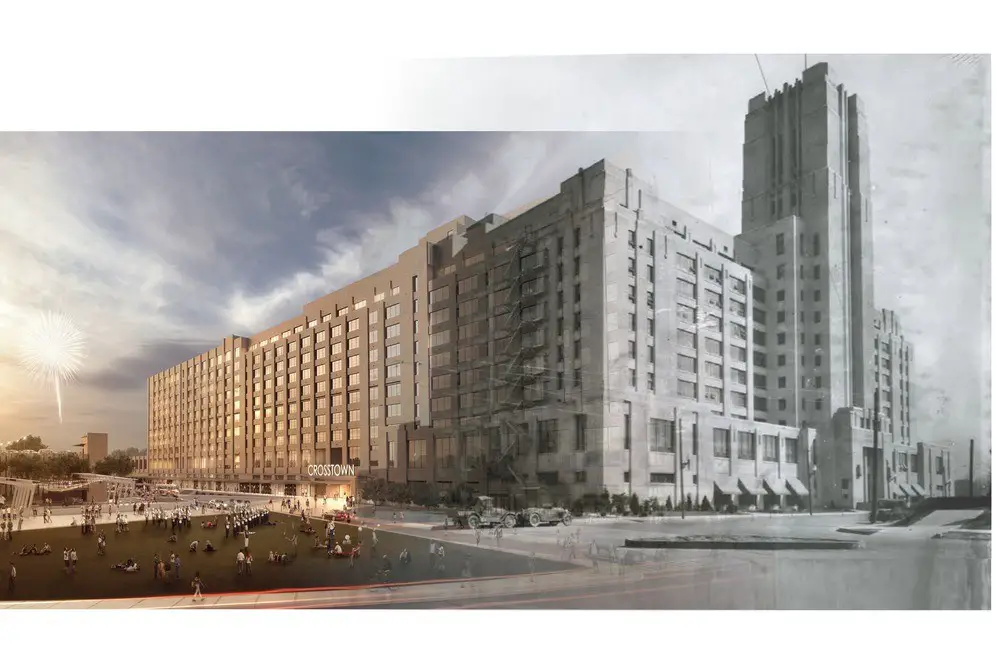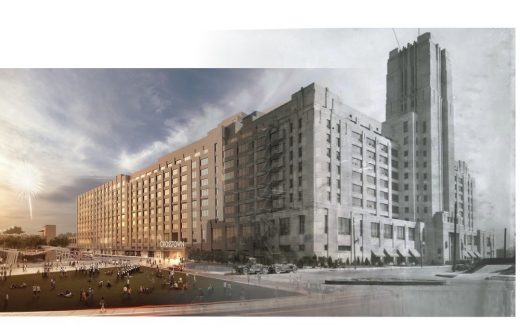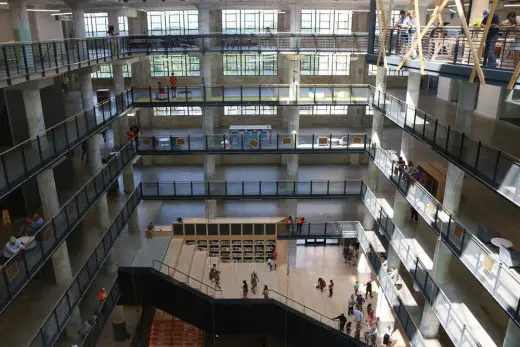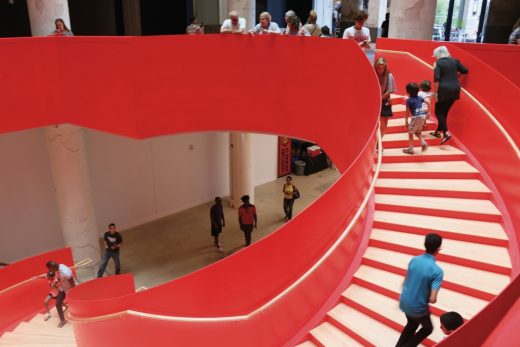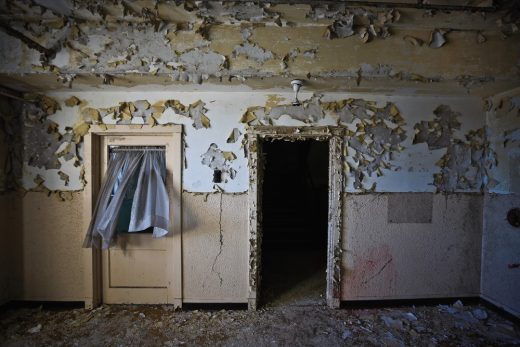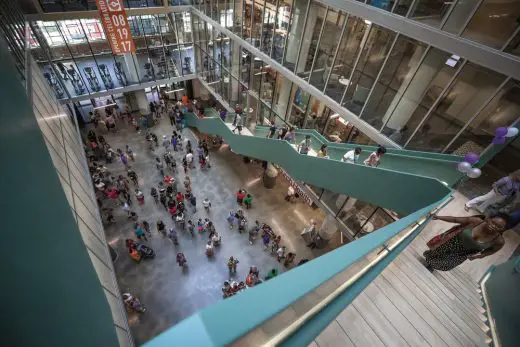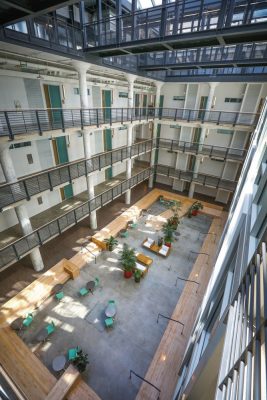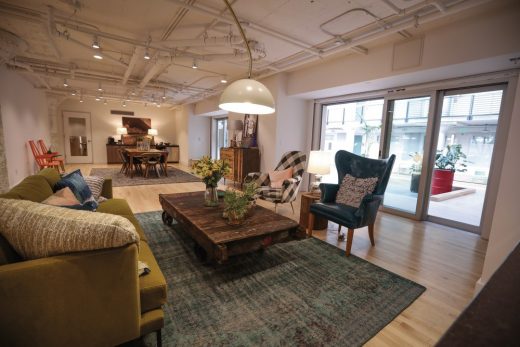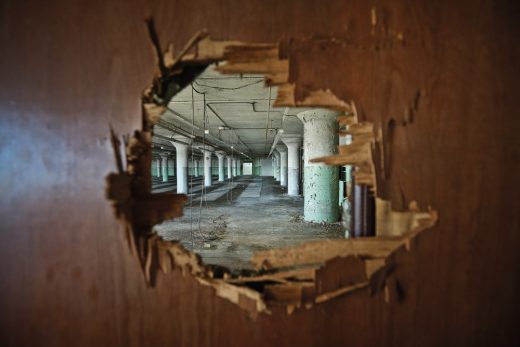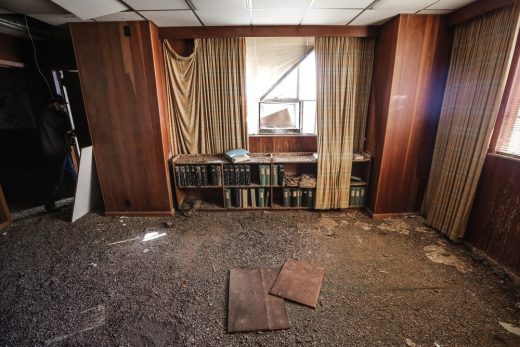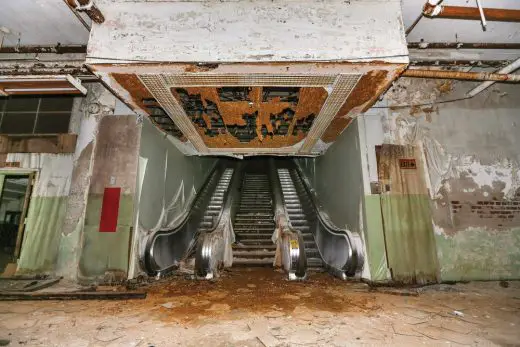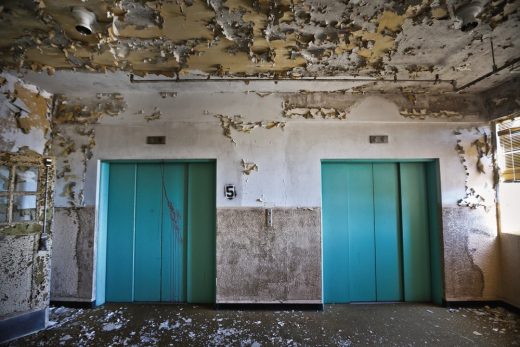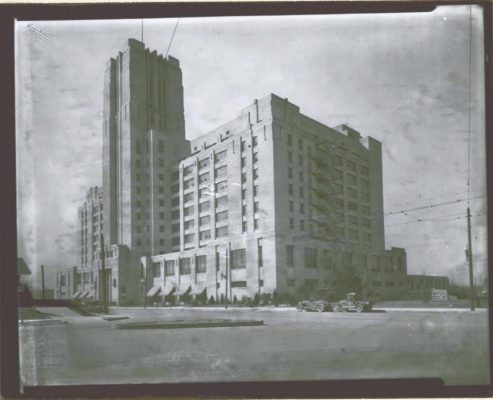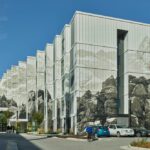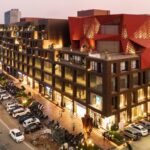Crosstown Concourse, Sears Department Store Urban Design, Retail Architecture, Memphis Building images
Crosstown Concourse in Memphis
Tennessee Mixed use Development design by DIALOG Architects, USA
Oct 25, 2017
Design: DIALOG, Architects
Location: Memphis, Tennessee, USA
Sears Department Store that Sat Derelict for Decades Is Reborn as Mixed-Use ‘Vertical Village’
Photos by Jamie Harmon
New ‘Vertical Village’ in Tennessee
In the heart of Memphis, Tennessee is the awakened community of Crosstown. The genesis of this urban revival dates back to 1927, where a premier Sears retail store animated the community. At its height, this art-deco building housed 1,500 employees.
Over time, shifting demographics and population depletion in Memphis’s urban core led to the store’s closure. As time passed, the 1.5 million sq ft building fell into disrepair. Some thought the building and community unsalvageable. Those some thought wrong. This is a story of the regeneration of an entire community-lost through strategic Urban Design by International Design firm, DIALOG.
After three years since breaking ground, the redevelopment of the historic Sears building is now complete. Renamed Crosstown Concourse, the building is an “urban magnet” and a true success story for regenerative design. From derelict to dashing, in true Memphian fashion, collaboration and dedication has once again proved to America that Memphians can make any change possible.
An American Legacy
For a building of this size, its resurrection seemed impossible. In spite of how far-fetched the idea seemed, Crosstown Concourse is the result of the collective spirit of Memphians who forged on to revive the historic Sears Building. The specifics of the design concepts were determined through
continued collaborative conversations between the engaged community, city officials, and designers. It was through these collaborations that the “vertical urban village” concept was born. This concept goes beyond mixed use, because it interweaves programming, creates shared space, and encourages an animated sense of community. The result? A design that enhances the social and economical environment of a place. Crosstown Concourse is a “place to be” in Memphis.
Today, through a radical and successful transformation, the 90-year-old building is on the precipice of its new life. Its rebirth is a celebration of community, history, inclusivity, and possibility. Crosstown is a product of a new kind of American Dream: not for “me” but for “we”. Implicit to its success is the comradery and ambitions of its current community who view Crosstown as an opportunity to elevate the quality of life in the neighborhood, and beyond.
Brought together by the vision and dedication of Memphis’s own community members Todd Richardson, Christopher Miner, Mcclean Wilson, DIALOG (design architect and urban planner) and LRK (as the on-site production and project manager), a mixed-used “vertical urban village” now buzzes with life.
Urban Planning Done Right
Designed as a vertical village, 3,000 people—teachers, students, doctors, patients, artists, civic leaders and entrepreneurs—will pass through Crosstown daily, colliding and collaborating in a monumental and mindful space.
Anchored in arts, education, healthcare and commerce, the project extends out from its art deco shell to represent a purposeful collective of mixed uses. It integrates a diverse range of programs, including a cancer treatment center, community gardens, a 500-seat performance theatre, local high school and office space. There are also 270 private residences, which are all connected to the surrounding community through a series of open-air plazas and gardens.
There are also 270 private residences, which are all connected to the surrounding community through a series of open-air plazas and gardens.
Designed to Revive a Community Lost
Inside, the connecting corridors and atria have been designed as dynamic architectural environments, inspiring movement and exploration through the space. Brick walls, exposed structure, concrete floors, and natural light are intrinsic to parcels—concourse’s residences.
These characteristics, paired with found building relics, natural finishes, creative use of building materials, and thoughtful space planning, further enhance the entire environment and ensure a uniquely textured lifestyle. This means a convergence of traditionally separated urban elements enhances the day-to-day experience; everything needed is in one place. The convergence of industries exposes atypical relationships to one another and increases accessibility to art and community.
The premise for the design of Crosstown Concourse was derived from the urban magnet theory, which was formed through a study of DIALOG’s Granville Island’s Urban Plan. This theory is dedicated to designing for people and place, and encourages architects to detach themselves from focusing solely on the aesthetic form.
As a vessel to serve the community, the design of Crosstown Concourse put people first and focused on planning the space to offer moments for gathering, convergence and community enhancement. Traditional planning codes are all about separation. Employment, industrial and housing all exist separately of one another within the urban context. Urban magnets do the opposite of that. Crosstown converges all these urban pieces so they work together to not only serve the community, but also to create one. Crosstown’s design creates diversity, inclusivity, traffic, and a truly unique place to inhabit and use.
Clean Living
Crosstown is an example of regenerative development—the emerging idea that true sustainability comes from the symbiotic relationship between people, organizations, form and function. Not only does the building meet strict environmental requirements, but it also promotes a sustainable lifestyle, which enhances the overall community experience.
Specific sustainability features include a district 3.5 mw, 9.6-million BTU per hour combined heat and power (CHP), which provides thermal and electrical needs for the entire project, plus neighboring health care, educational and residential facilities. This represents potential energy savings in millions of dollars per year.
Regenerating Iconic Americana
From Elvis Presley to B.B. King, Justin Timberlake to Otis Redding, Memphis is among the most important and defining places in the history of American art. The Crosstown community is proud of its creative roots, and a commitment to the arts is one of the project’s defining elements. The Crosstown Arts Project is generating important dialogue around community building through ventures like film screenings, urban ballets, public art exhibitions, lectures and food festivals. It is a central site for discussion about city building and sustainability, health and economic prosperity.
Overall, Crosstown is demonstrating the potential of regenerative design not just through the building and its immediate site, but to the broader communities of Memphis by providing a much-needed central hub for the community to celebrate its iconic history, access daily necessities, and make room for a promising future.
Quick Facts
The Sears Crosstown Building is currently listed on the National Register of Historic Places and is one of the largest historic adaptive reuse projects in Tennessee’s history.
The building was originally 1.5 million square feet. The size has reduced to 1.1 million square feet.
$200 million from 30 different sources, including philanthropic, private, and public funding.
An estimated 3,000 people will pass through the building on a daily basis.
270 loft-style apartments on floor 7 through 10, including studios and one-, two-, three-bedroom units.
The redesign included an 1150-car parking garage.
$200 million project for a building that has been empty for 20 years will have 3000 daily visitors.
1000 construction jobs during development, providing $36 million in wages.
800 net new permanent jobs at completion, providing $50 million in wages.
Crosstown Concourse in Memphis – Building Information
Restoring Concourse means installing 3,200 window sections. That’s more than the White House and US Capitol combined.
Windows at Concourse are twice as energy-efficient as the windows on an average home.
Window glass comprises over 65% of the building’s exterior.
Over ten million pounds of metal has been removed from the building and recycled: that’s ten pounds for every person in Shelby County.
Redeveloping Concourse means installing 1200 tons of new steel.
By 2017, over 360 miles of brick joints will be restored. Laid end-to-end, they would reach New Orleans.
Concourse now has over 2,000 linear feet of swing stages. That’s more than any other redevelopment project in the country.
Over 1,500 new doors will be installed in the building.
Concourse will contain about 7 miles of HVAC piping, which will hold about 35,000 gallons of water.
Workers will hang more than 12,000 linear feet of cable railings in the building. That would stretch from Concourse to The Pyramid.
Principal architect, Alan Bonfice of DIALOG is the Design Architect and Urban Planner of record for Crosstown Concourse. LRK, who are based in Memphis, Tennessee are the Project Architects.
Photographer: Jamie Harmon
Crosstown Concourse in Memphis images / information from DIALOG architecture studio
Location: Memphis, TN, United States of America
Architecture in USA
US Architecture Designs – chronological list
Buildings in Tennessee
Williams Street Loft Residence, Chattanooga
Design: Hefferlin + Kronenberg Architects
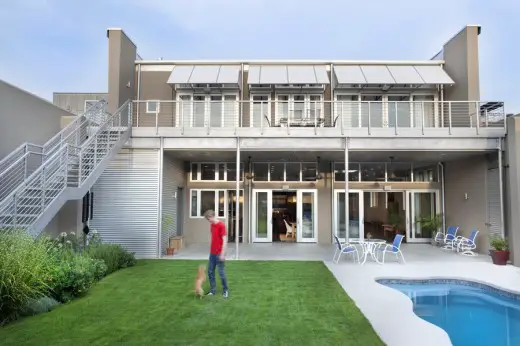
photo © Sarah Dorio
Williams Street Loft in Chattanooga
Tennessee Affordable Residence, Chattanooga
Design: Hefferlin + Kronenberg Architects
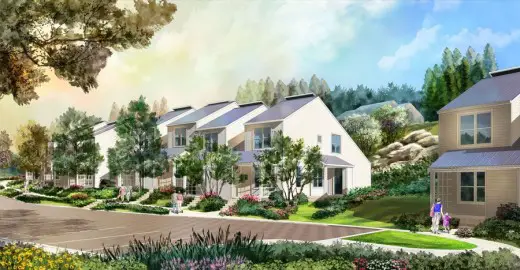
photo © Harlan Hambright
Fairmount Avenue Townhomes Tennessee – Chattanooga
Art Studio in Chattanooga
Design: Hefferlin + Kronenberg Architects
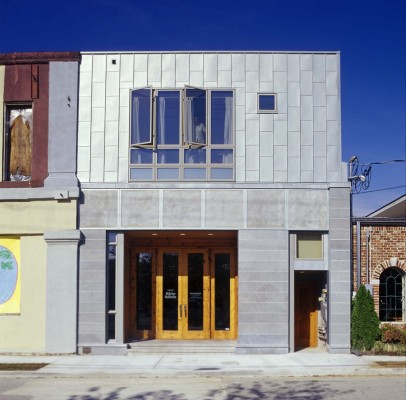
photo © Tim Street-Porter
Akhriev Art Studio in Tennessee
Tennessee Riverside Residence, Tellico Plains
Design: Hefferlin + Kronenberg Architects
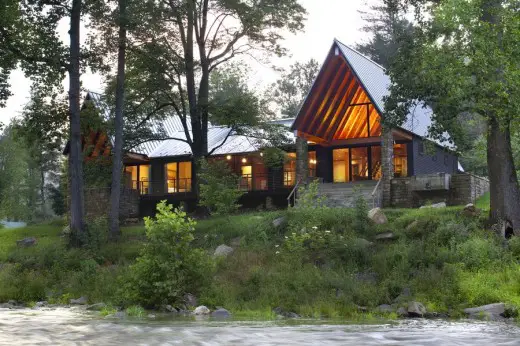
photo © Sara Dario / Harlan Hambright
Tellico Cabin Tennessee
American Architect Studios
New York State Architecture Designs
Buildings / photos for the Crosstown Concourse in Memphis design by DIALOG Architects, USA. page welcome

